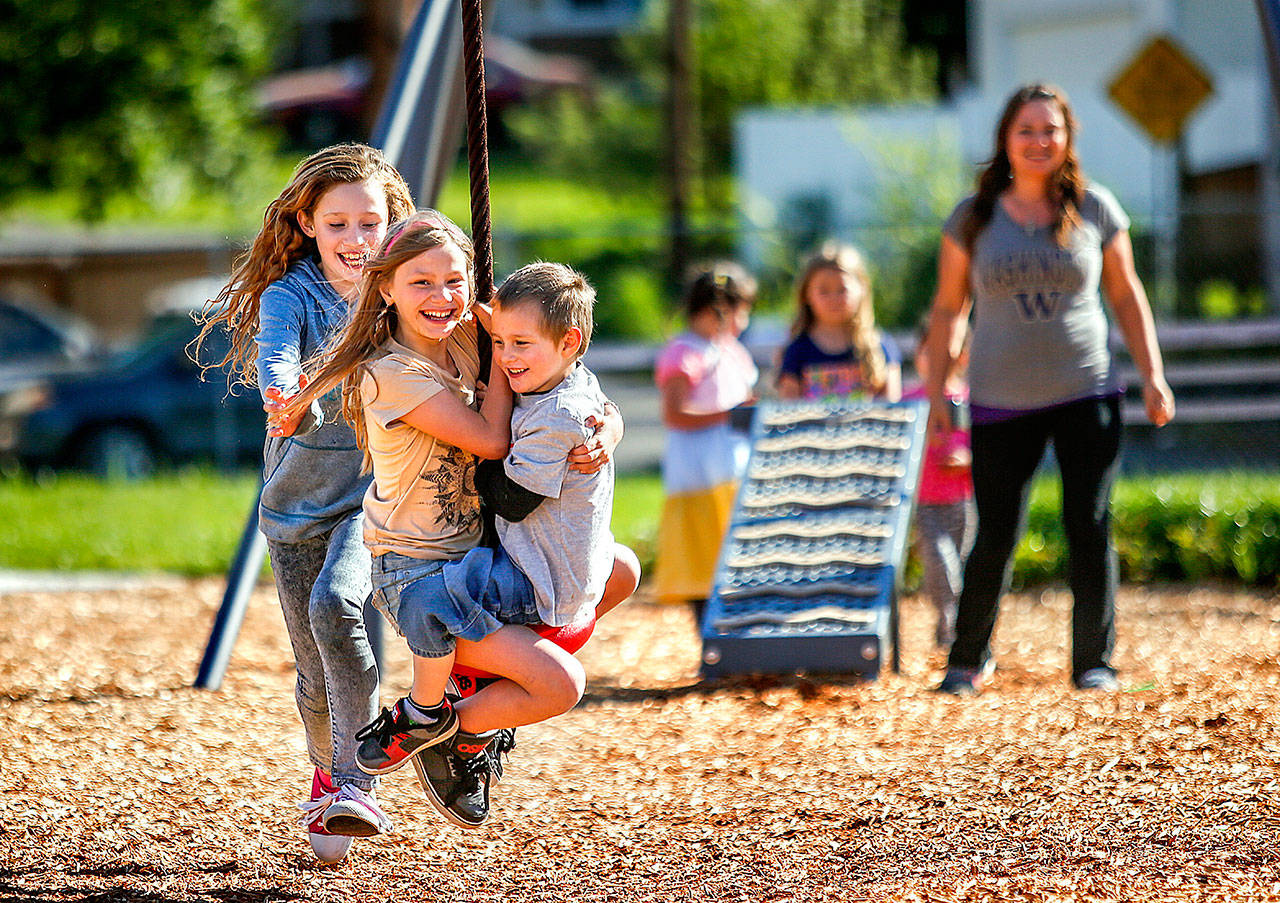By The Herald Editorial Board
Politics and budgets are surely the last things on the minds of many of us as we watch kids or grandkids at a park playground, walk or bike along a trail or simply enjoy the scenery along a river or shoreline this summer.
But our enjoyment of parks, trails, shoreline and more relies heavily on political considerations every two years as the Legislature weighs funding in the biennial capital budget for a program nearing its 30th anniversary, the Washington Wildlife and Recreation Program, providing grants to hundreds of projects throughout the state. Coupled with matching funds from local governments, other agencies and civic groups, the program has created, expanded and refurbished state and local parks and trails, improve access to public lands, protected wildlife habitat and helped preserve working farmlands and forests.
The Washington Wildlife and Recreation Coalition, which assists the state Recreation and Conservation Office with the program, recently announced it will request $130 million in a list of projects. Even $130 million only goes so far. More than 120 local, state, tribal and nonprofit groups submitted more than 273 project applications that totaled $197 million. The coalition currently is evaluating that list and ranking it based on criteria that includes community support, immediate threat by development, enhancement of habitat, quality of views, diversity of uses, public demand and other criteria.
In Snohomish and Island counties, the program has provided more than $90 million in funding that has been matched nearly 2-for-1. Among the projects aided since its start:
Snohomish County’s Centennial Trail, including $1.66 million that linked Lake Stevens and Arlington with bike, pedestrian and equestrian trails;
Refurbishment of Everett’s Henry M. Jackson Park, $500,000 that helped install a new basketball court, playground equipment and a community garden;
Renovation of the Edmonds Pier, $700,000 that helped extend its life for 30 years;
Sultan River access, which helped the community with $3,000 to purchase acreage for trail and riverfront access and connect two city parks; and
Conservation easements, funded by $613,000 and matched by Island County, for 106 acres of working farmland within Ebey’s Landing National Historical Reserve.
While the Legislature isn’t scheduled to convene until January, work already is progressing to assemble the next list of projects to be submitted as a budget request for consideration by the governor and lawmakers.
A legislative update to the program in 2016 rebalances its allocations to provide 45 percent of funding for recreation programs, 45 percent for habitat conservation and 10 percent for working farmland and forest conservation. Another change looks to improve opportunities for disadvantaged rural and urban areas by reducing the requirement for matching funds, making it easier for projects to qualify in areas where median household income is below the state average, in economically distressed counties and in areas federally declared as disaster areas.
“The goal is to make the outdoors more accessible in those areas,” said Danica Johnson, spokeswoman for the coalition.
In recent years, the full amount requested has not been approved. In the 2017-19 request — which wasn’t approved until this legislative session — the program sought $120 million in funding. The governor recommended $100 million in his budget, but the Legislature approved $80 million. This followed recent years of reduced allocations for the program, including $55 million in the 2015-17 request, $65 million in 2013-15 and $42 million in 2011-13.
Recognizing the long list of worthy capital budget projects — not the least of which are additional classrooms necessary to reduce class sizes in public schools — the governor and Legislature need to come as close as possible to meeting the full $130 million request.
In the last ten years, the state’s population has grown by more than 700,000 and is forecast to add another 870,000 between now and 2030. That’s another 1.7 million people who will add to the demand for parks, trails and open space and who will also continue the encroachment on wildlife habitat. Among this year’s requests are 30 projects that would help protect streams and other habitat for threatened salmon species.
In addition to providing recreation and habitat preservation, the grants serve as an economic driver, helping to support a $26.2 billion outdoor recreation industry in Washington state that sustains about 201,000 jobs, $7.6 billion in annual wages and $2.3 billion in local and state taxes each year, according to a 2015 report prepared for the state Recreation and Conservation Office.
Adding to the need for full funding is the uncertain future of the Land and Water Conservation Fund, the federal counterpart to Washington Wildlife and Recreation Program. The federal program, which similarly funds park, recreation and habitat projects through oil drilling royalties, expires Sept. 30 if not reauthorized by Congress.
If the federal program is not renewed, the state would face an even greater responsibility for continuing its work to fund park development and restoration and preservation of working farmland, timberland and wildlife habitat.
Those who value community parks, trails, beaches and wildlife habitat need to make sure state and national lawmakers hear that level of support.
Support grant program
Washington residents can show their support for the Washington Wildlife and Recreation Program by signing on to an online letter to lawmakers backing the $130 million request at tinyurl.com/WWRPsupport.
Talk to us
> Give us your news tips.
> Send us a letter to the editor.
> More Herald contact information.

























